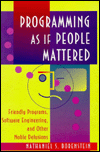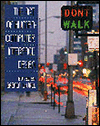Resources for 323
Supplies students should provide:
1. Students are expected to maintain current backups of their files. Students
can use CD-R or DVD-R media, or USB flash memory drives.
2. Students may need a digital camera/camcorder for field work and documentation.
3. A pad of grid paper is useful for sketching, taking notes, etc.
4. Students should upgrade their home PC's with multimedia plug-ins for
their web browser. They may also want to download trial versions of the development and production software (Adobe CS6)
http://get.adobe.com/reader/
http://get.adobe.com/flashplayer/
http://support.apple.com/downloads/#quicktime
(download QuickTime)
5. Students may want to download open source tools for digital media design and production, especially the Unity 3d IDE:
Unity 3d development environment (version 5.4.3):
https://unity3d.com/get-unity/download/archive
Google VR SDK for Unity:
https://developers.google.com/vr/unity/
Audacity audio recording and editing tool:
http://www.audacityteam.org
Blender 3D modeling, animation, and video editing tool:
http://www.blender.org/download/
GIMP image processing tool:
http://www.gimp.org/downloads/
Inkscape vector drawing tool:
http://www.inkscape.org/en/download/
Stony Brook Multimedia Links:
Many of the SINC site labs maintained by TLT run the same software as the CS Multimedia lab:
http://it.stonybrook.edu/services/sinc-sites
Applications training:
323 course work requires the use of many software applications. Independently
acquiring skill in the use of these tools is the student's responsibility.
Students should use their free SBU account at the video training site Lynda.com by going to:
www.stonybrook.edu/lynda
...and sign in using your NetID and password.
Additionally, there are free-of-charge internet training resources:
Adobe CS6:
http://tv.adobe.com/channels/
Photoshop:
http://www.good-tutorials.com/tutorials/photoshop
Flash:
http://www.flashkit.com/tutorials
iLife (Photos, GarageBand, and iMovie):
https://www.apple.com/support/ilife/
QuickTime:
http://cbtcafe.com/quicktime/index.html
Blender:
http://www.blender.org/support/tutorials/
GIMP:
http://www.gimp.org/tutorials/
Inkscape:
http://www.inkscape.org/en/learn/tutorials/
Usability templates:
Usability Toolkit
http://www.usability.gov/templates/index.html#Usability
Persona Template
http://sites.google.com/site/superuserfriendly/templates/persona-template
Magazines:
UX Design at Smashing Magazine
http://uxdesign.smashingmagazine.com/
ACM SIGCHI: Interactions journal on-line
http://www.acm.org/interactions/
Authors:
Don Norman: Designing For People
Bill Moggridge: Designing Interactions
Edward Tufte: Beautiful Evidence
Recommended supplemental reading:

Programming as if People Mattered: Friendly Programs, Software
Engineering, and Other Noble Delusions
Nathaniel S. Borenstein
ISBN 0691037639
September 1994
Princeton University Press
Through a set of lively anecdotes and essays, Nathaniel Borenstein traces
the divergence between the fields of software engineering and user-centered
software design, and attempts to reconcile the needs of people in both
camps.
|
 The
Art of Human-Computer Interface Design The
Art of Human-Computer Interface Design
Brenda Laurel
ISBN 0201517973
May 1990
Addison-Wesley
The first section of The Art of Human-Computer Interface Design, "Creativity
and Design," offers insight into general interface issues. The "Users
and Contexts" section details the experiences of a variety of users
and designers, providing invaluable input for interface designers. The
"Sermons" sections is a collection of thought-provoking pieces
by some of the people whose work and points of view have deeply influenced
human-computer interaction--Donald Norman, Nicholas Negroponte, Ted Nelson,
Alan Kay, Jean-Louis Gassee, Timothy Leary, and Ben Shneiderman. The fourth
section, "New Directions," looks at some of the ideas and theories
that are on the frontiers of human-computer interface design. |

 The
Art of Human-Computer Interface Design
The
Art of Human-Computer Interface Design